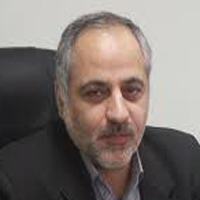Proposed Solutions to Implement the Priorities of the Sendai Framework to Reduce the Risk of Accidents: A Policy Brief
Accidents and disasters impose enormous costs on governments and nations each year, as well as causing great suffering to people affected by various disasters around the world. Today, accidents and disasters account for a large portion of government resources and programs. Iran is no exception to this rule. It is one of the ten most populated countries globally and the fourth most troubled country in Asia in terms of natural disasters. Therefore, understanding the risks as a basis for future planning is vital. Reducing disaster risk as a global priority requires the collective efforts of policymakers, managers, professionals, and all stakeholders in this field. The Sendai Framework is the most critical UN disaster risk reduction strategy (2015-2030). Considering the importance of the mentioned cases, a group of experts came together and discussed the solutions for implementing the Sendai Framework in Iran using the focus group discussion method. Finally, they prepared the present policy brief. One of the most important strategies is to study the history of risk in different parts of the world and Iran and prepare a risk zoning map, form a transnational and national organization. This map should delegate each authority to a particular organization for risk management, emphasize the correct understanding and upgrade the scientific level of people towards risk awareness. It must pay particular attention to create a culture in the field of risk awareness, analyzing stakeholders to attract support, and create a national information network. The map ought to develop a comprehensive risk management program, expanding education at the level of managers and society, creating and upgrading a quick alert system, and comprehensive preparedness plans. Finally, it can be said that the Sendai Framework is one of the most important documents published to plan for disasters. This planning is not just in the response phase but must be applied at all the crisis management cycle levels.
-
Review of the General Teaching Model Based on Educational Neuroscience Studies
Shokouh Shafaei, Fariba Haghani *, Mohammad Hossein Yar Mohammadian, Mahmoud Talkhabi
Journal of Psychological Dynamics in Mood Disorders, -
Determination of Bacterial Bio-aerosols Type and Its Concentration in Indoor Air of Tehran in 2023
Pezhman Gheitasian, Seyed Mohammad Tabatabaee, Anooshiravan Mohseni Band-Pay, Mohammadreza Massoudinejad, Mohsen Farhadi, Elham Shariatmadari, Mehdi Kamari, Maryam Meserghani *
Journal of Research in Environmental Health, -
Survey of Electropersulfate/H2O2 Efficiency for Treatment Synthetic Wastewater Containing Tetracycline using Response Surface Methology (RSM)
Pezhman Gheitasian, Seyed Mohammad Tabatabaee Jabali, , Mohsen Farhadi, Javad Golshani Asl, Behzad Valizadeh, Maryam Meserghani *
Journal of Research in Environmental Health, -
Identifying the Core Competencies Required for Nursing Graduates: A Thematic Analysis
*, Mahnaz Movaghar, Zahra Jalili
Iranian Bimonthly of Education Strategies In Medical Sciences,




